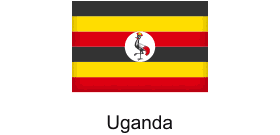 Kampala Air Quality 5 times worse off than WHO recommendation
Kampala Air Quality 5 times worse off than WHO recommendation
Kampala Capital City Authority (KCCA) Lord Mayor Erias Lukwago has sounded a warning that the City’s air quality and tree cover are declining with now the air quality 5 times worse off than the World Health Organization recommendation.
Lukwago, who was presiding over a launch dinner of the network on Championing Liveable Urban Environments through the African Network for Air (CLEAN AIR) initiative in Kampala said Kampala air quality always hovers around 22% against the WHO recommended 5% Air Quality level.
“We did a tree density audit in Kampala and found out that we have 3 to 5 trees per acre. Our target is to have 20 to 30 trees per acre.
“In terms of air quality in Kampala, we are 5 times worse off than what is recommended by the World Health Organization acceptable air pollution and air quality levels,” said Lukwago.
He said that apart from making better policies, laws and ordinances, Kampala City is planning to set up 5 acres forest in order to mitigate some of the bad effects of air pollution.
“Under the Urban Forestry Policy, I directed the Kampala Land Board to identify 5 acres of land with in Kampala to set up a Kampala City Forestry.” Said Lukwago.
Major Kampala City Air Pollutants have always been pointed out as unpaved and dusty roads, vehicle and Motorcycle emissions, open burning of waste, industrial activities and burning of solid biomass for cooking.
Lukwago said that under the new Kampala Green Infrastructure Ordinance, before issuing a development plan to any developer, he or she must show or prove that they a portion for setting up of a green park.
The launch was hosted by AirQo and its partners (The University of Lagos, UrbanBetter-University of Pretoria, The Health Environment Institute, Stockholm Environment Institute, and the World Resources Institute).
It was also part of AirQo’s ongoing collaborations with the U.S. Department of State to build a community of practice in Africa for improved capacity for air quality management. The launch was also the climax of a 3-day peer learning and knowledge exchange workshop that brought together the communities of practice from over 15 cities in Africa, including universities, policymakers, and civil society organizations, with a focus on utilizing low-cost sensors and other digital technologies for air quality management in African cities.
The 3-day engagement aimed at increasing the understanding of low-cost air quality sensors and digital solutions as new approaches to air quality management in the African context, fostering city-city and policy-research collaborations across Africa and increasing awareness of air quality issues for better health outcomes.
The AirQo mobile Application was also unveiled at the launch. It that enables timely access to air quality information for the public in African cities.
According to the World Health Organization, Air pollution is one of the greatest environmental risk to health. By reducing air pollution levels, countries can reduce the burden of disease from stroke, heart disease, lung cancer, and both chronic and acute respiratory diseases, including asthma.
In 2019, 99% of the world’s population was living in places where the WHO air quality guidelines levels were not met.
The combined effects of ambient air pollution and household air pollution are associated with 6.7 million premature deaths annually. Ambient (outdoor) air pollution is estimated to have caused 4.2 million premature deaths worldwide in 2019.
WHO estimates that in 2019, some 37% of outdoor air pollution-related premature deaths were due to ischaemic heart disease and stroke, 18% and 23% of deaths were due to chronic obstructive pulmonary disease and acute lower respiratory infections respectively, and 11% of deaths were due to cancer within the respiratory tract.
People living in low- and middle-income countries disproportionately experience the burden of outdoor air pollution with 89% (of the 4.2 million premature deaths) occurring in these areas. The greatest burden is found in the WHO South-East Asia and Western Pacific Regions. The latest burden estimates reflect the significant role air pollution plays in cardiovascular illness and death.
Some 89% of those premature deaths occurred in low- and middle-income countries, and the greatest number in the WHO South-East Asia and Western Pacific Regions.
Policies and investments supporting cleaner transport, energy efficient homes, power generation, industry and better municipal waste management would reduce key sources of outdoor air pollution. Access to clean household energy would also greatly reduce ambient air pollution in some regions.
